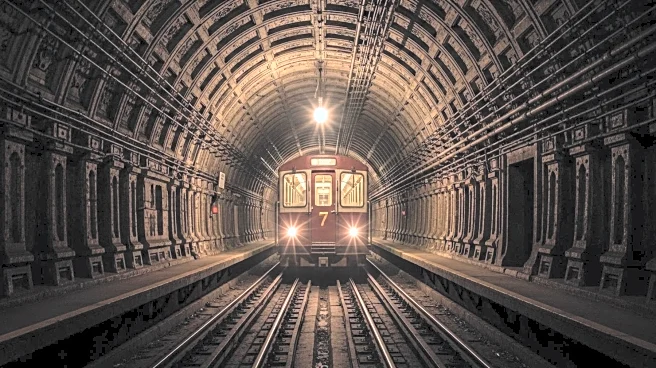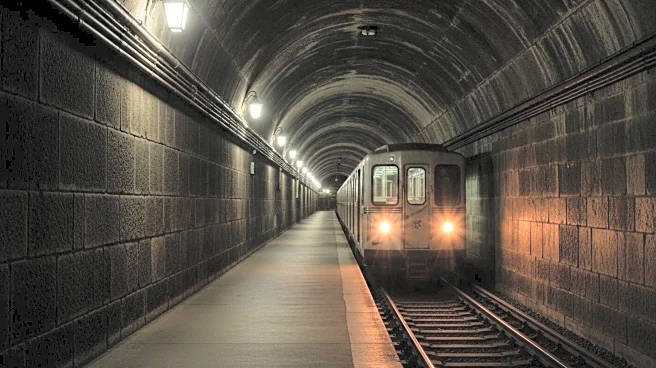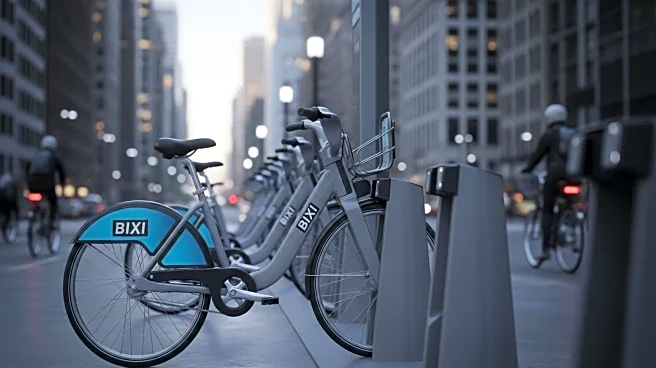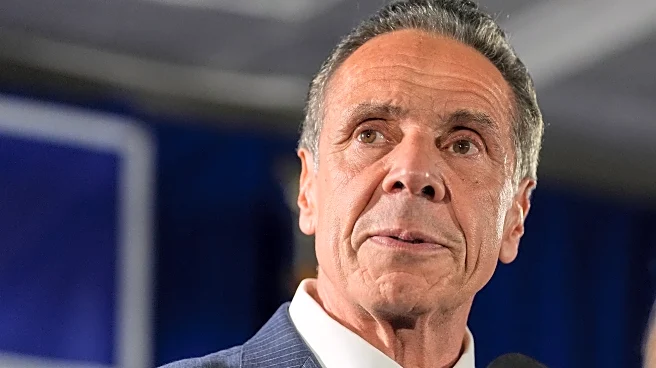What is the story about?
What's Happening?
In 1870, Alfred Ely Beach, a New York inventor, secretly constructed a pneumatic subway beneath Broadway, aiming to revolutionize urban transit. The subway was unveiled during a lavish event in the basement of Devlin's clothing store in Tribeca, without City Hall's approval. Beach's subway was designed to be superior to the existing streetcars and omnibuses, offering a clean, quiet, and comfortable ride. The event was intended to garner public support and pressure lawmakers to extend the subway line. Despite the impressive demonstration, Beach's plans were thwarted by powerful business and political interests, including Boss Tweed, who opposed the subway due to vested interests in streetcar operations.
Why It's Important?
Beach's secret subway represents a significant moment in the history of urban transit, highlighting the challenges innovators face when confronting entrenched interests. The project demonstrated the potential for underground transit systems long before they became a reality in New York City. Beach's efforts underscore the impact of political and business opposition on infrastructure development, a theme still relevant today. The story serves as a reminder of the obstacles that can impede technological progress, emphasizing the role of public opinion and political maneuvering in shaping urban development.
What's Next?
Although Beach's subway did not lead to immediate changes, it laid the groundwork for future developments in urban transit. New York City eventually established its official subway system in 1904, decades after Beach's initial demonstration. The story of Beach's subway continues to inspire discussions about innovation, risk-taking, and the interplay between technology and politics. As cities face modern infrastructure challenges, Beach's experience offers lessons on navigating political resistance and leveraging public support to drive change.
Beyond the Headlines
Beach's subway project highlights the ethical and legal dimensions of innovation, particularly the balance between risk-taking and regulatory compliance. The unauthorized construction of the subway raises questions about the limits of entrepreneurial ambition and the responsibilities of innovators to adhere to legal frameworks. The story also reflects broader cultural shifts in attitudes toward urban transit and the role of spectacle in influencing public policy. Beach's approach to leveraging public enthusiasm for legislative change remains relevant in contemporary discussions about infrastructure and urban planning.
AI Generated Content
Do you find this article useful?














